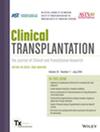Anticoagulation and Antiplatelet Regimen in Cardiac Transplant. Clinical Characteristics, Outcomes, and Blood Product Transfusion
Abstract
Background
We aimed to evaluate the characteristics, clinical outcomes, and blood product transfusion (BPT) rates of patients undergoing cardiac transplant (CT) while receiving uninterrupted anticoagulation and antiplatelet therapy.
Methods
A retrospective, single-center, and observational study of adult patients who underwent CT was performed. Patients were classified into four groups: (1) patients without anticoagulation or antiplatelet therapy (control), (2) patients on antiplatelet therapy (AP), (3) patients on vitamin K antagonists (AVKs), and (4) patients on dabigatran (dabigatran). The primary endpoints were reoperation due to bleeding and perioperative BPT rates (packed red blood cells (PRBC), fresh frozen plasma, platelets). Secondary outcomes assessed included morbidity and mortality-related events.
Results
Of the 55 patients included, 6 (11%) received no therapy (control), 8 (15%) received antiplatelet therapy, 15 (27%) were on AVKs, and 26 (47%) were on dabigatran. There were no significant differences in the need for reoperation or other secondary morbidity-associated events. During surgery patients on dabigatran showed lower transfusion rates of PRBC (control 100%, AP 100%, AVKs 73%, dabigatran 50%, p = 0.011) and platelets (control 100%, AP 100%, AVKs 100%, dabigatran 69%, p = 0.019). The total intraoperative number of BPT was also the lowest in the dabigatran group (control 5.5 units, AP 5 units, AVKs 6 units, dabigatran 3 units; p = 0.038); receiving significantly less PRBC (control 2.5 units, AP 3 units, AVKs 2 units, dabigatran 0.5 units; p = 0.011). A Poisson multivariate analysis showed that only treatment on dabigatran reduces PRBC requirements during surgery, with an expected reduction of 64.5% (95% CI: 32.4%–81.4%).
Conclusions
In patients listed for CT requiring anticoagulation due to nonvalvular atrial fibrillation, the use of dabigatran and its reversal with idarucizumab significantly reduces intraoperative BPT demand.


 求助内容:
求助内容: 应助结果提醒方式:
应助结果提醒方式:


